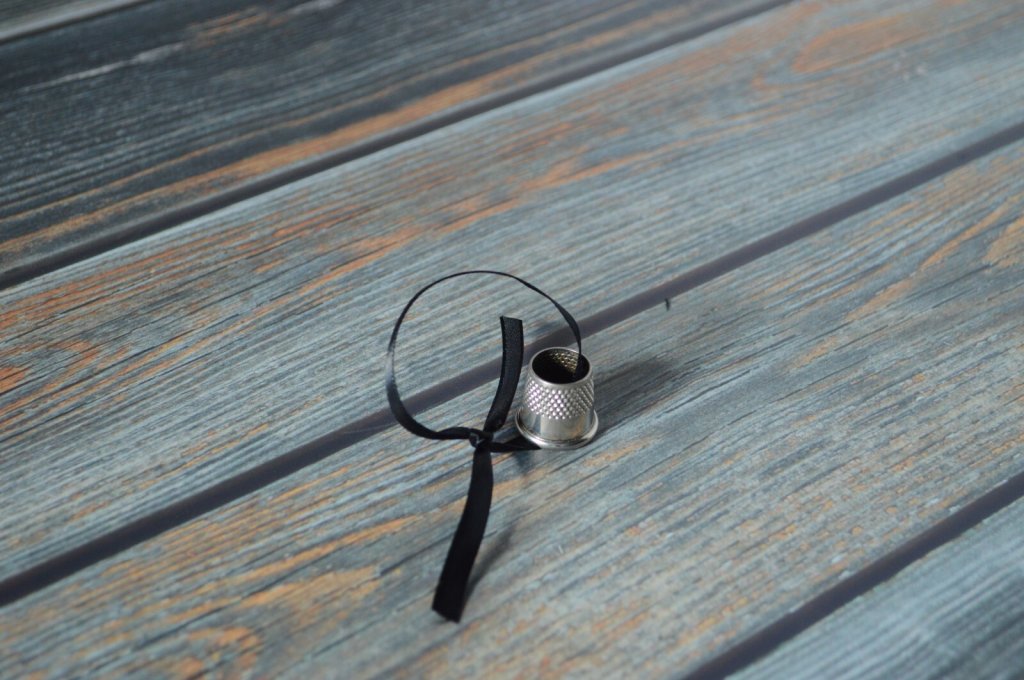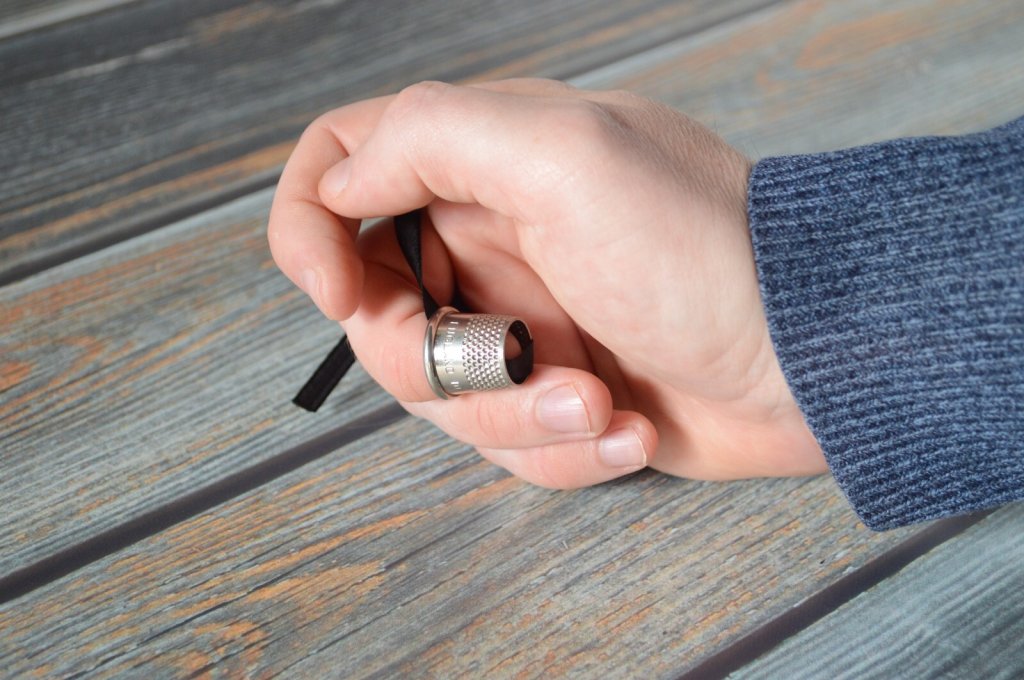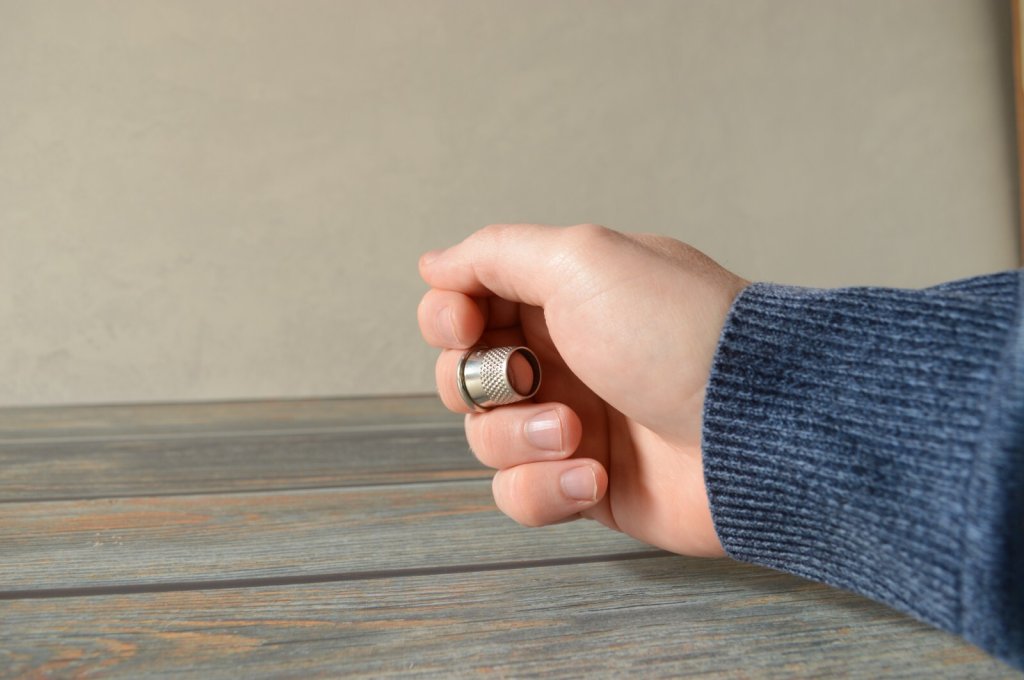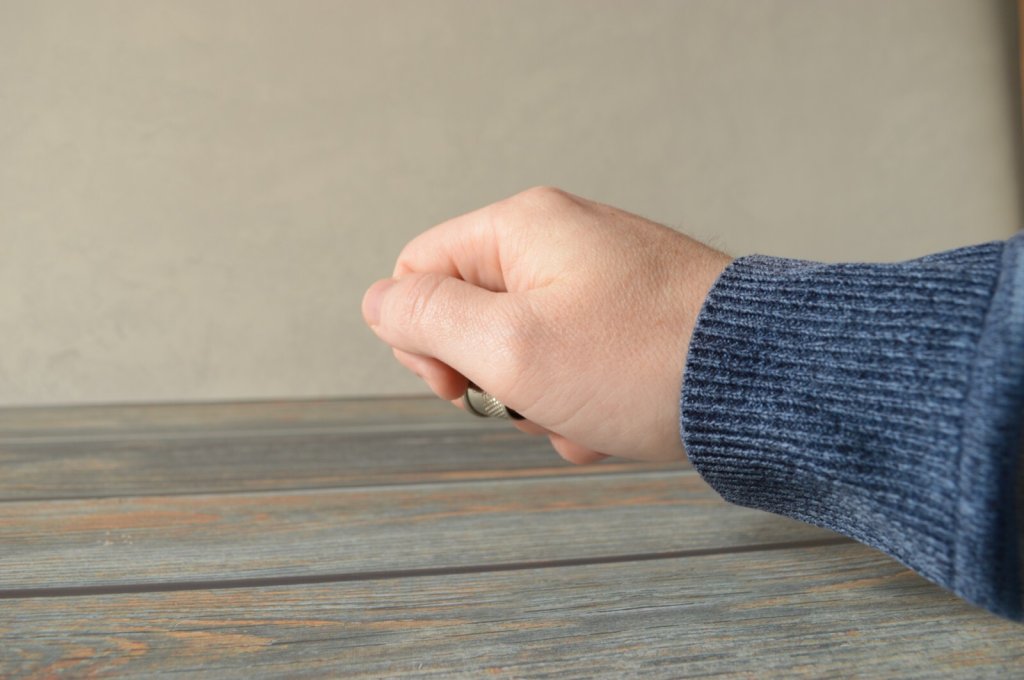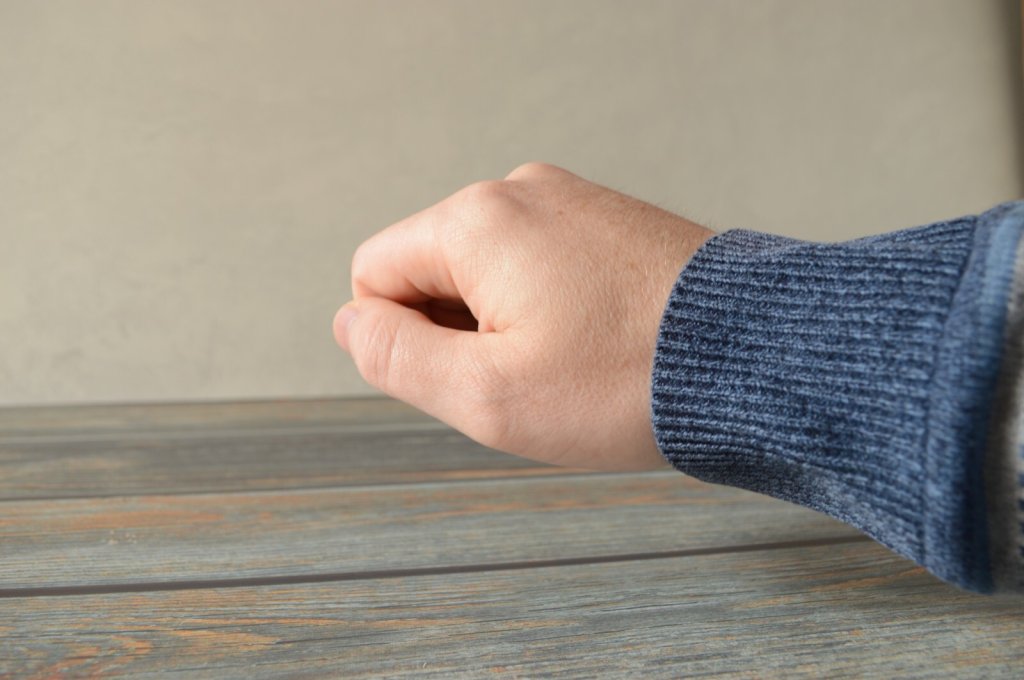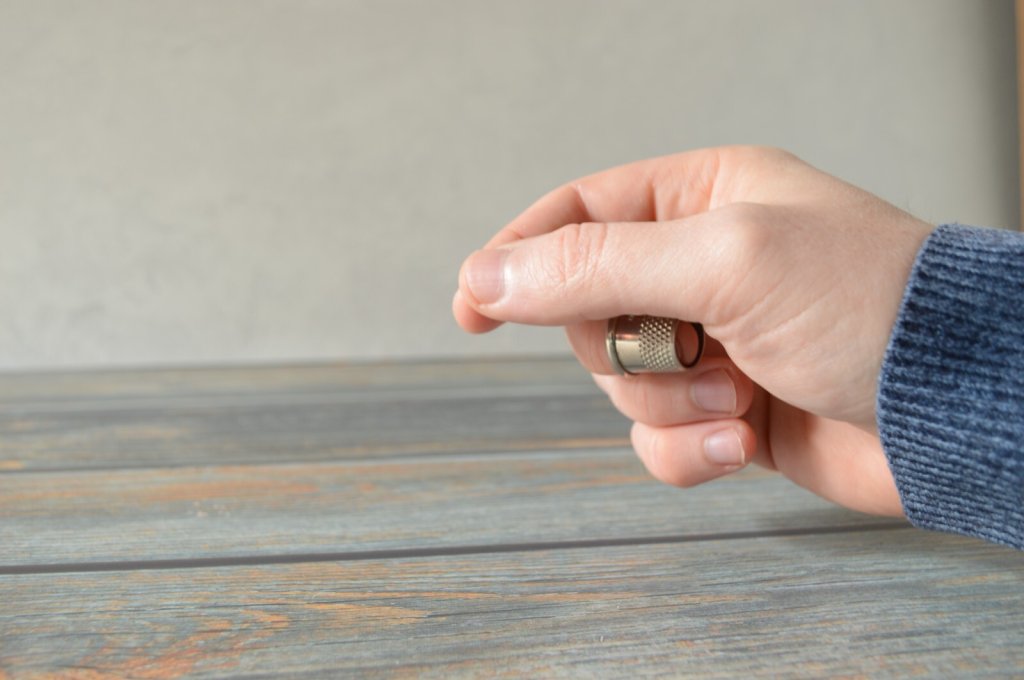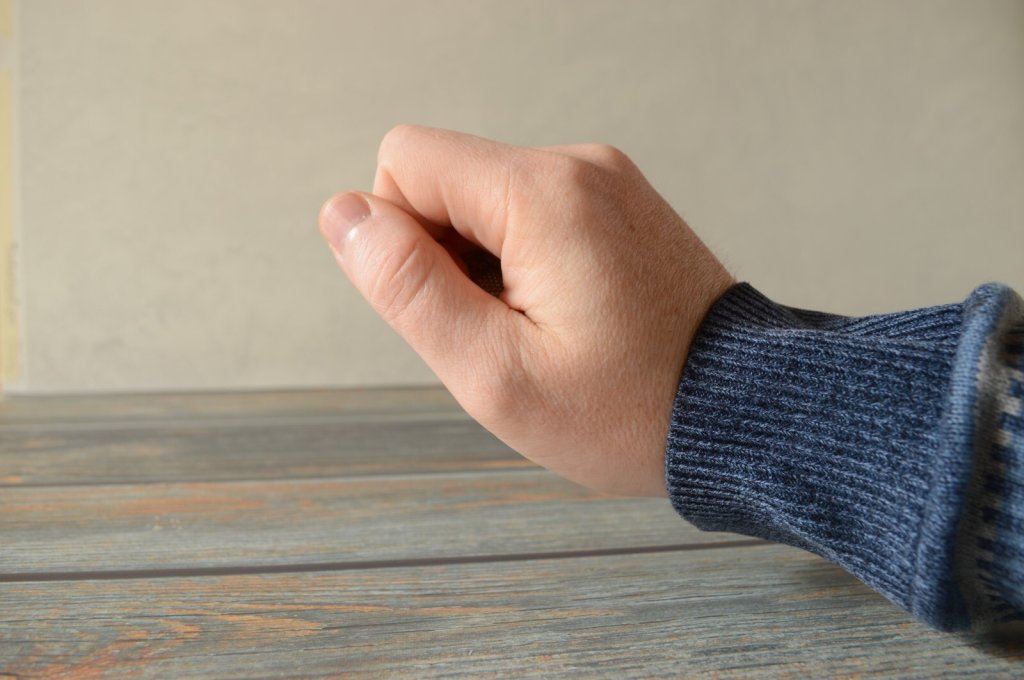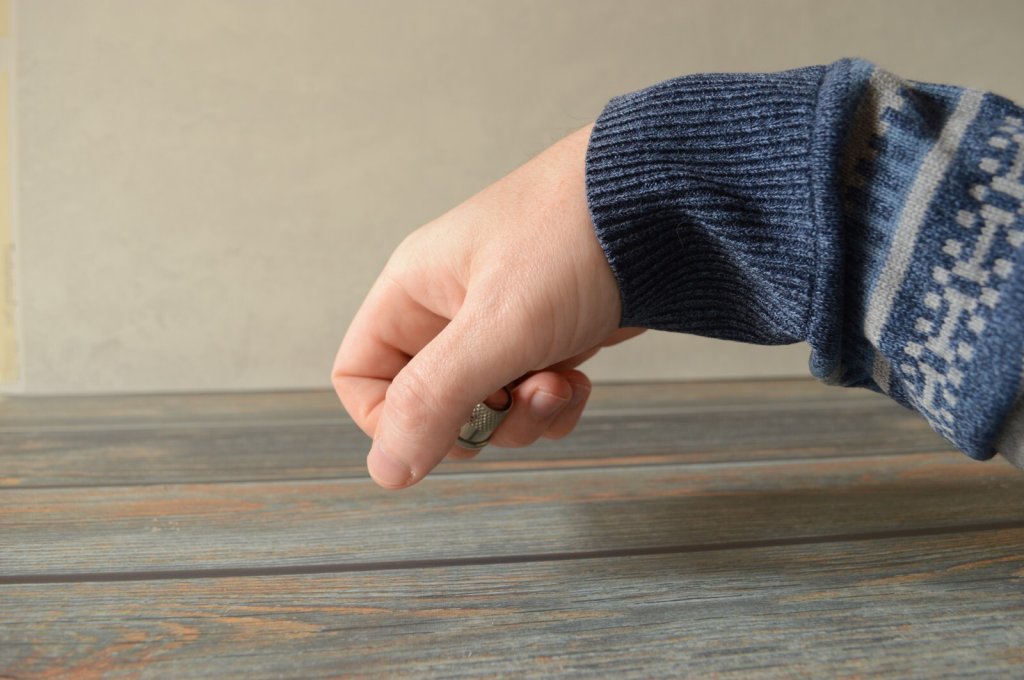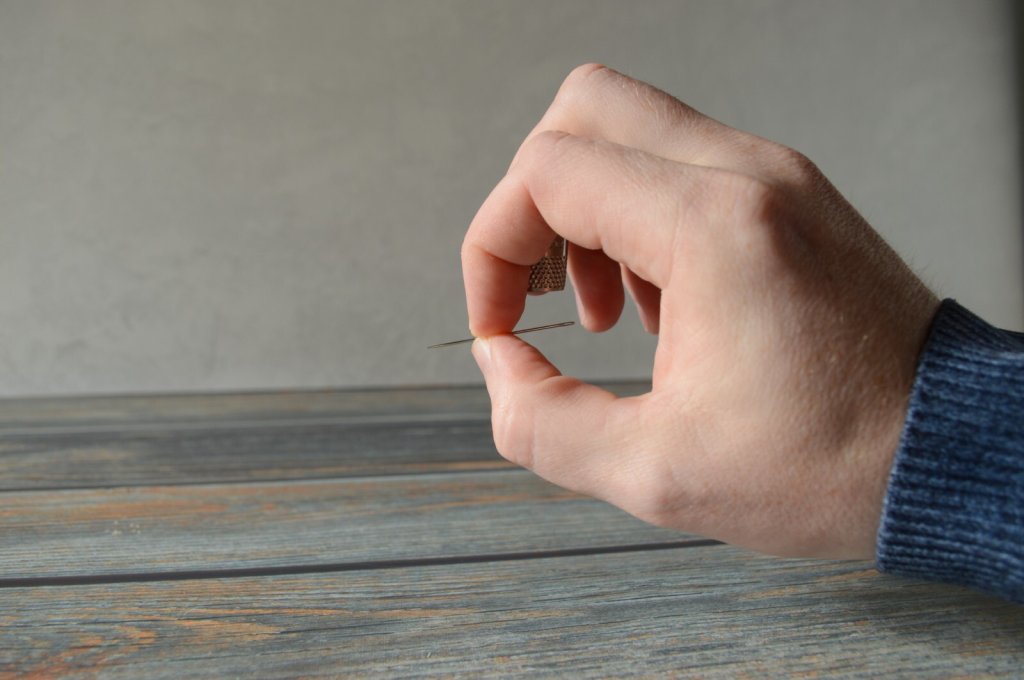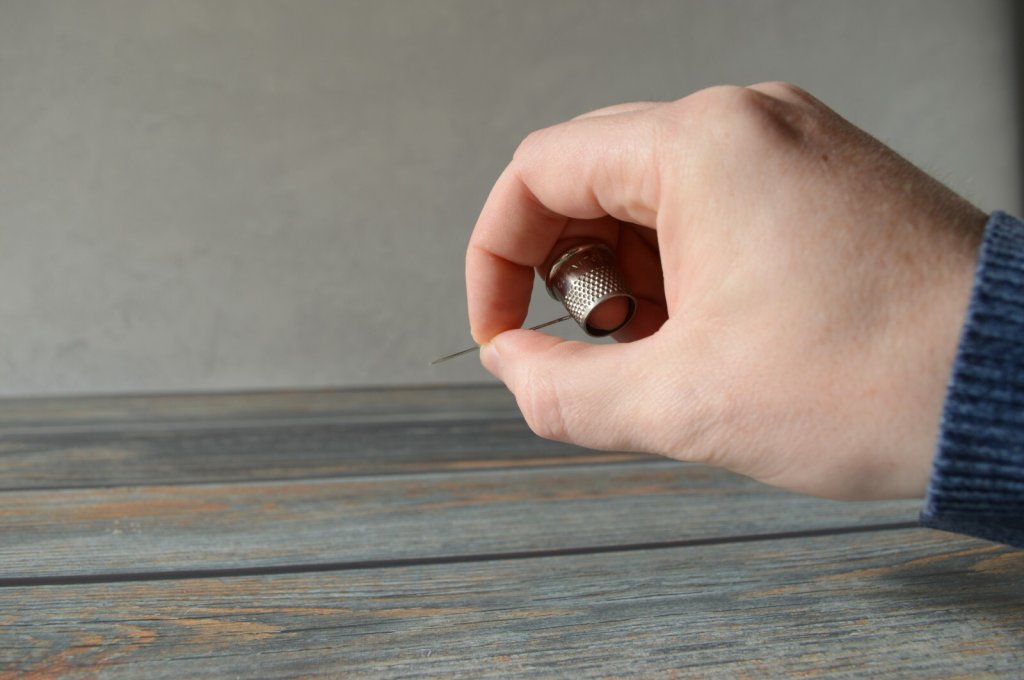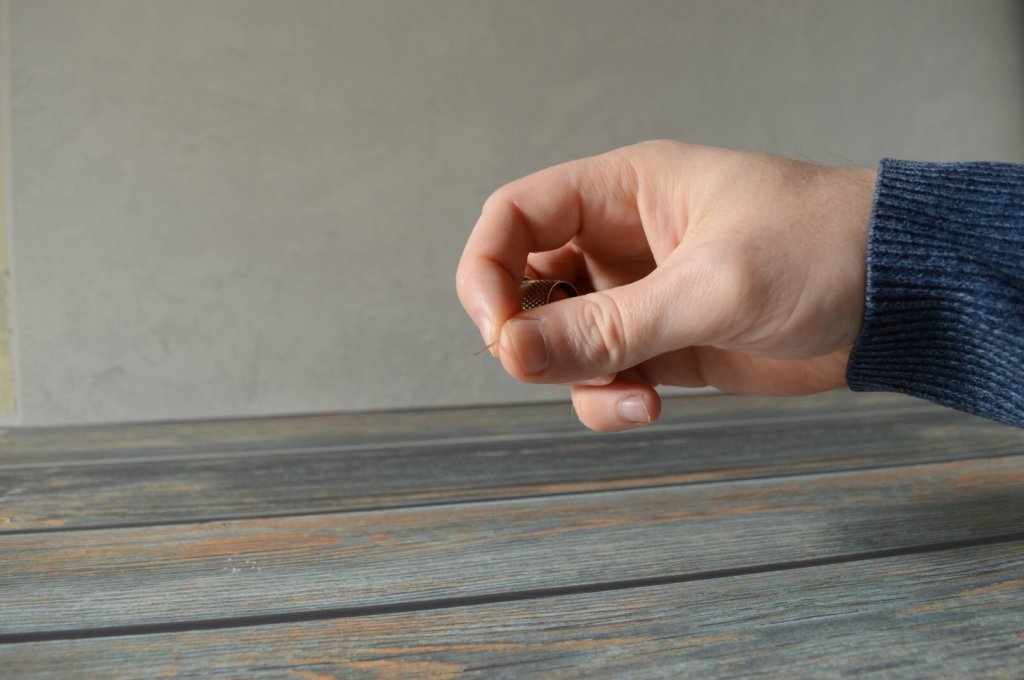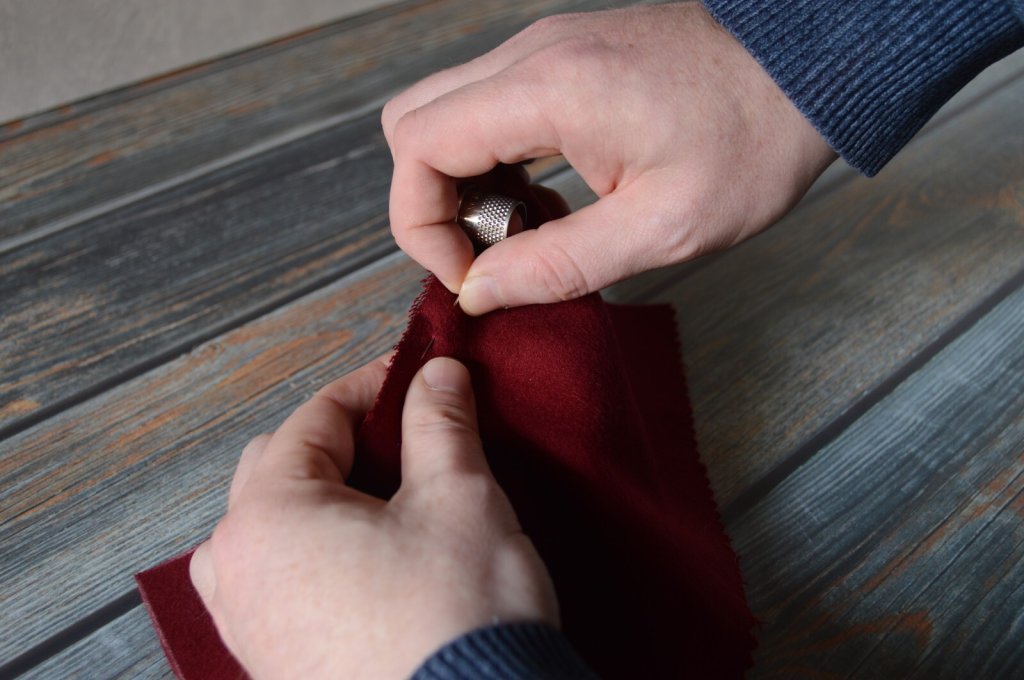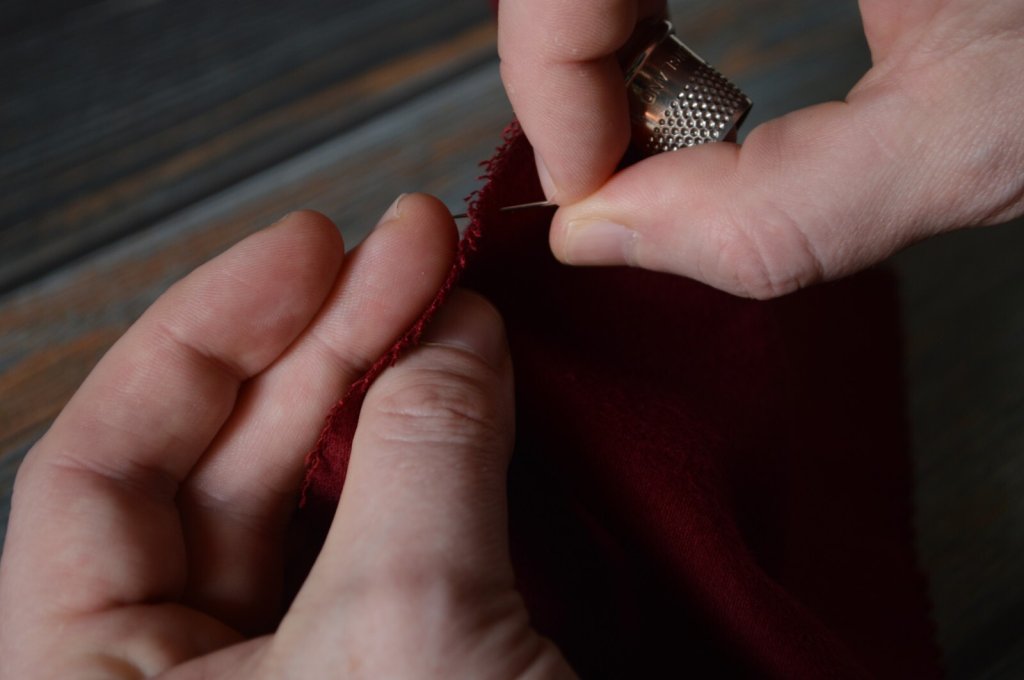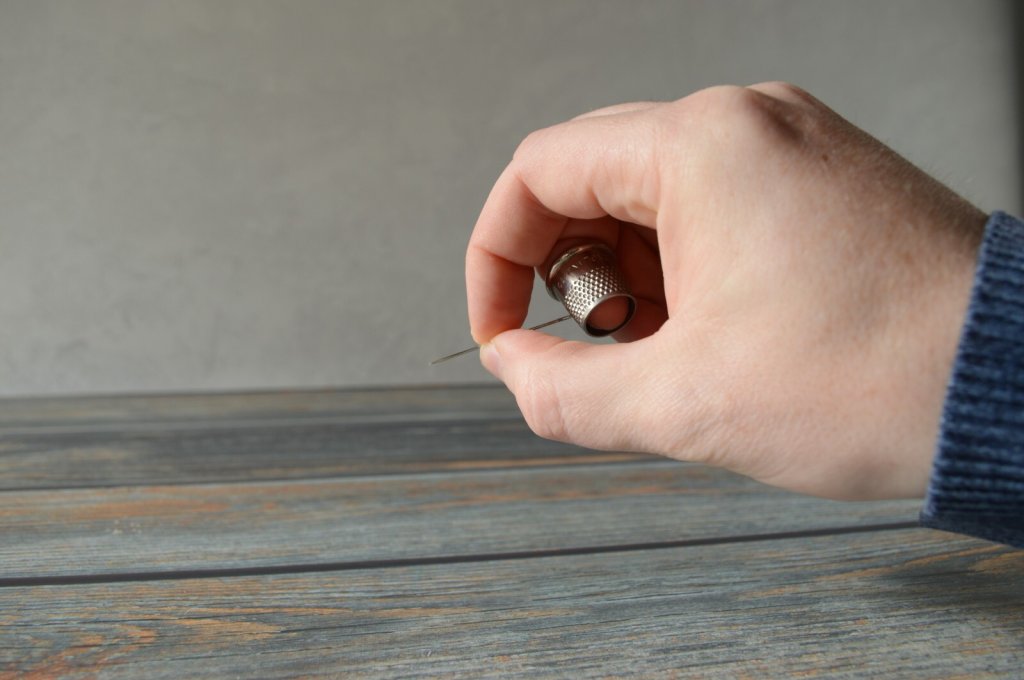We all must have that one friend, or perhaps it is our self that is guilty, who insists upon sewing without the use of any thimble. I will admit I was one of them when I first started sewing more seriously, and was so proud of the callous on the tip of my finger that could drive the needle through two or three layers with no problem. As one becomes more serious in his or her tailoring work, however, it becomes clear that a thimble is most necessary if you want to progress in your skills and proficiency. And more specifically, a tailor’s thimble will best help you develop and refine your hand sewing.
Why a Tailor’s Thimble?
You may be used to a normal metal thimble often used by seamstresses and home sewers, that has the closed top. A tailor’s thimble, however, has an open top, and coming from a home sewing technique, they can seem intimidating, and indeed, you may have to alter your entire sewing technique.
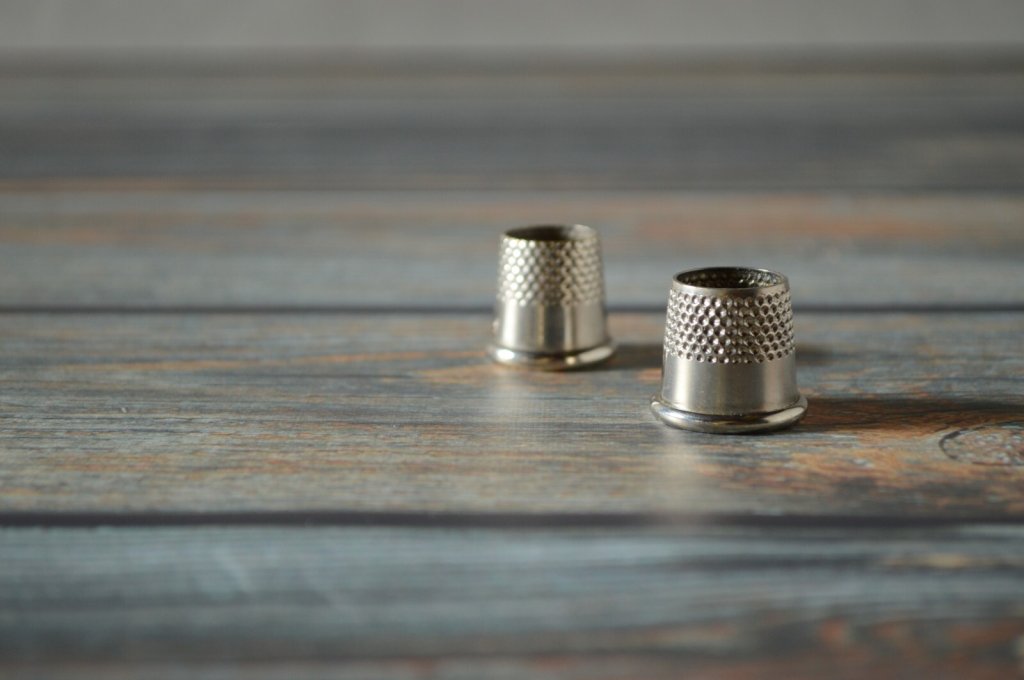
Tailor’s thimbles have an open top for two important reason. First, they allow the tailor to sew for long periods of time without condensation forming in the tip of the finger under the thimble. Second, and most importantly, the open top gives the dexterity and tactility necessary for a tailor. As one is sewing, the fabric is constantly manipulated with both hands, and having that open top allows you to use the tip of that covered finger to aid in this manipulation.
Choosing the Right Size
Choosing a thimble can be a bit of a challenge these days. Unless you have a higher end sewing store nearby that carries tailor’s thimbles, you’ll probably have to order them online and guess at the sizing. I found mine at B. Black and Sons, and since I have medium to large hands, I bought both a size 9 and 10. After some use, I found that the size 10 was a better fit for me, so you may have to order a couple different sizes and experiment for yourself.
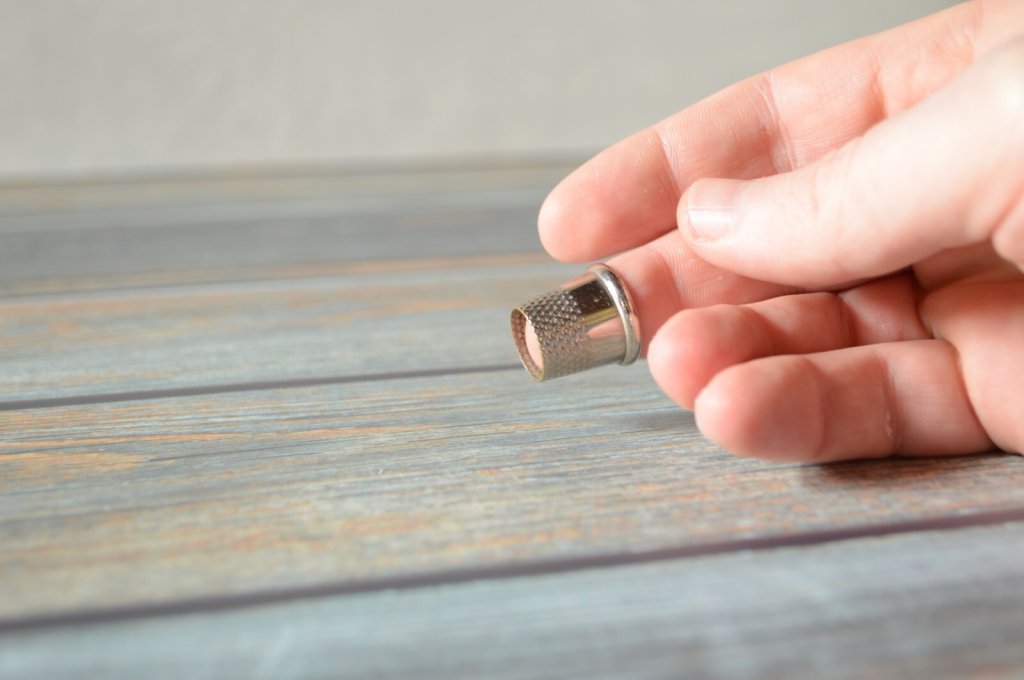
When determining a good fit, place the thimble on your middle finger of your dominant hand. The tip of your finger should extend past the top of the thimble by about 1/16 to 1/8 of an inch, allowing you to get a feel for the fabric as you are sewing. If the thimble is too small, your finger will not protrude enough and you’ll lose that sense of touch in that finger. Too big and the thimble will tend to slide around or even fall off.
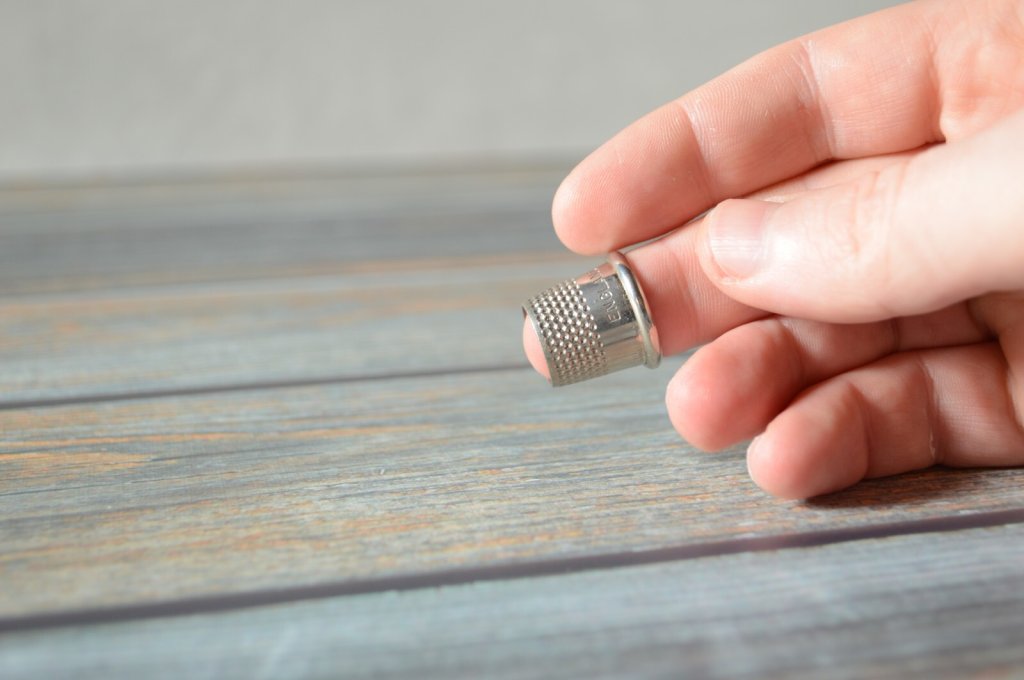
Another point to keep in mind is the material of the thimble. Most of the new thimbles for sale today are made out of some kind of nickle alloy and for certain people this can give a slight allergic reaction. The only solution I can think of is to hunt down an antique thimble made out of sterling silver or find that rare source for a new one. Be prepared to spend a lot more money, though.
How to Use the Thimble
The first thing to remember when using a thimble is to always stay completely relaxed. The moment you start to tense up the muscles in your fingers, hand, wrist, or arm, you’ll begin losing a degree of control over your work and you will tire out more quickly.
Hold the thimble on the middle finger on your dominant hand, and just let your fingers relax into a very loose fist, as pictured.
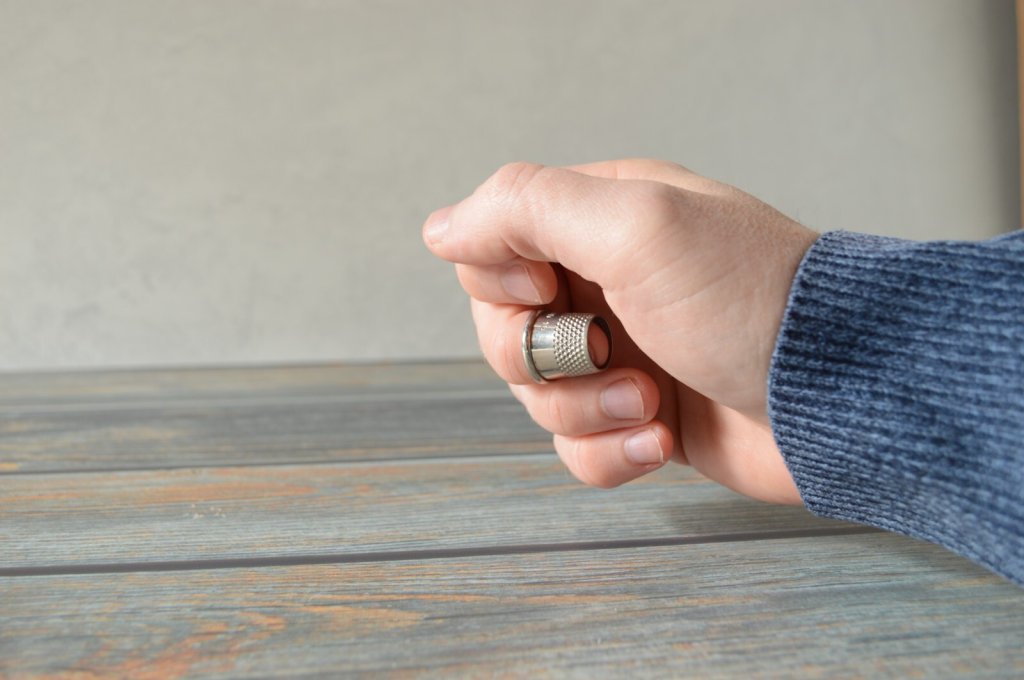
If necessary, you can try tying a piece of ribbon or string around the thimble and your finger in order to keep the thimble in the correct position. After a few days to a week you should be able to do without it. Remember to stay relaxed!
